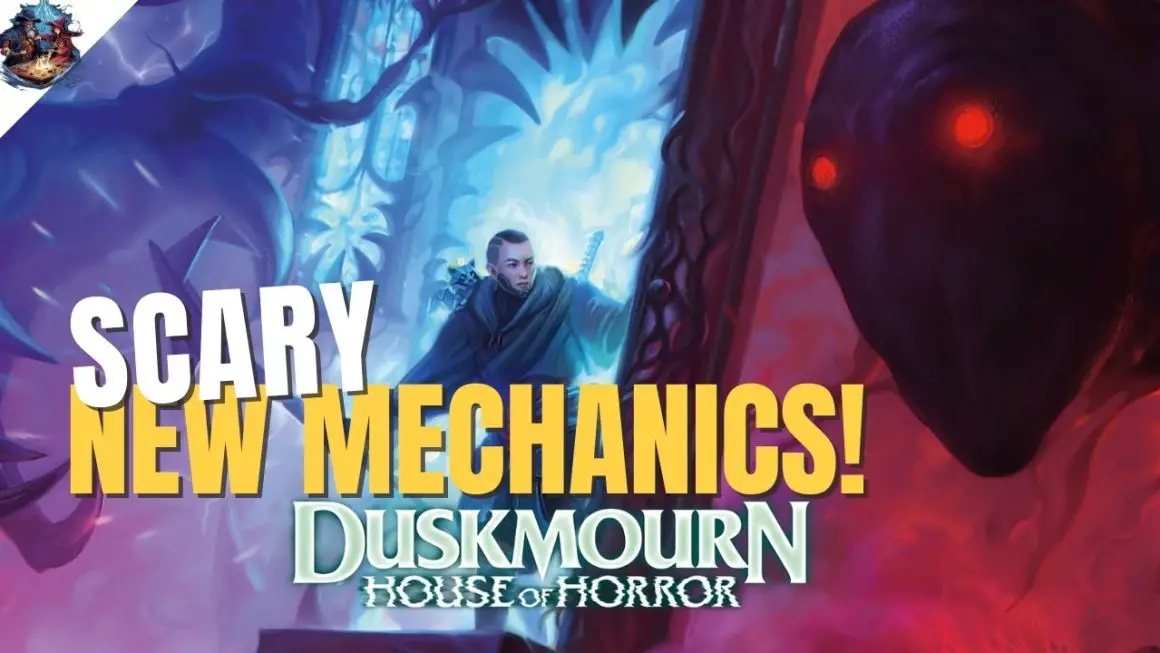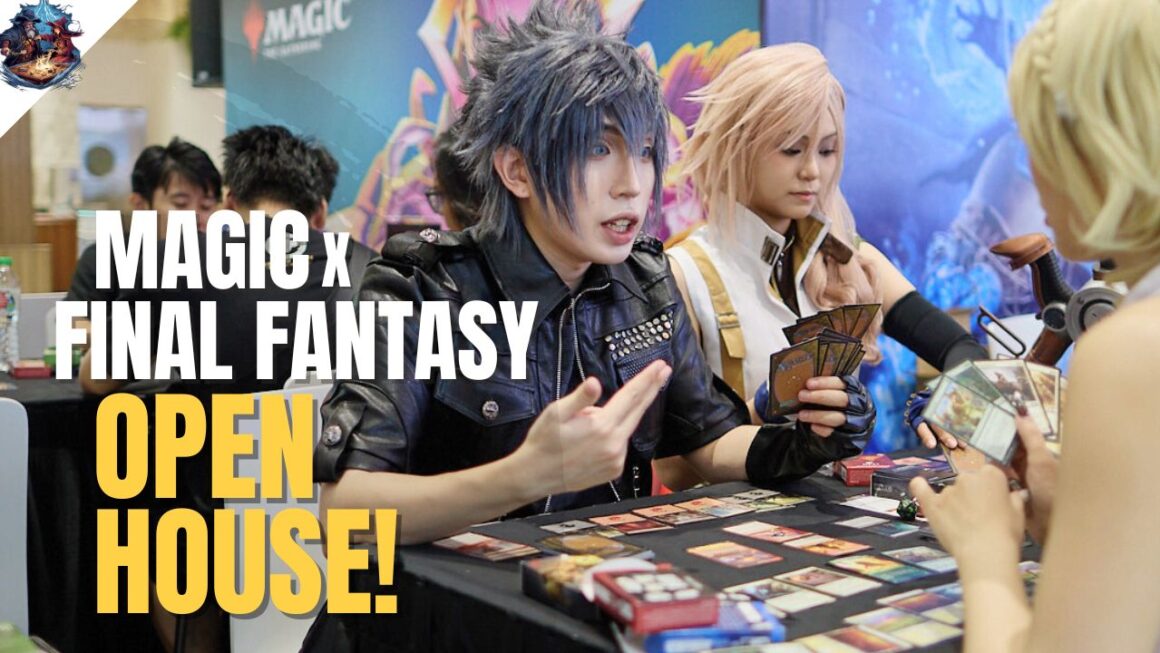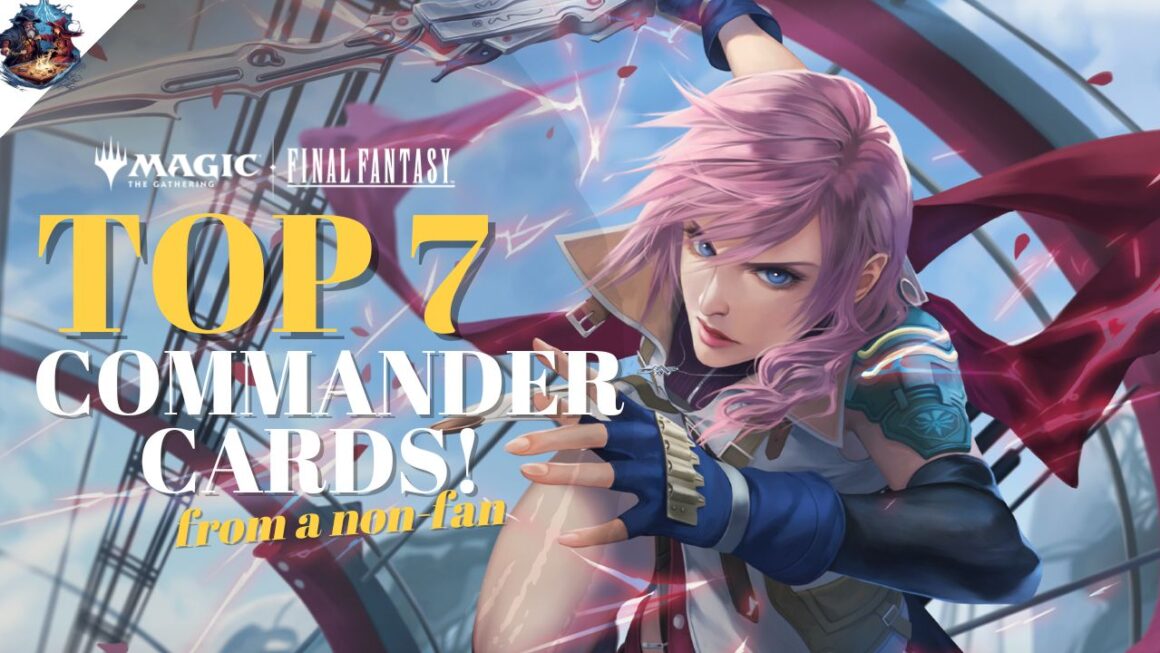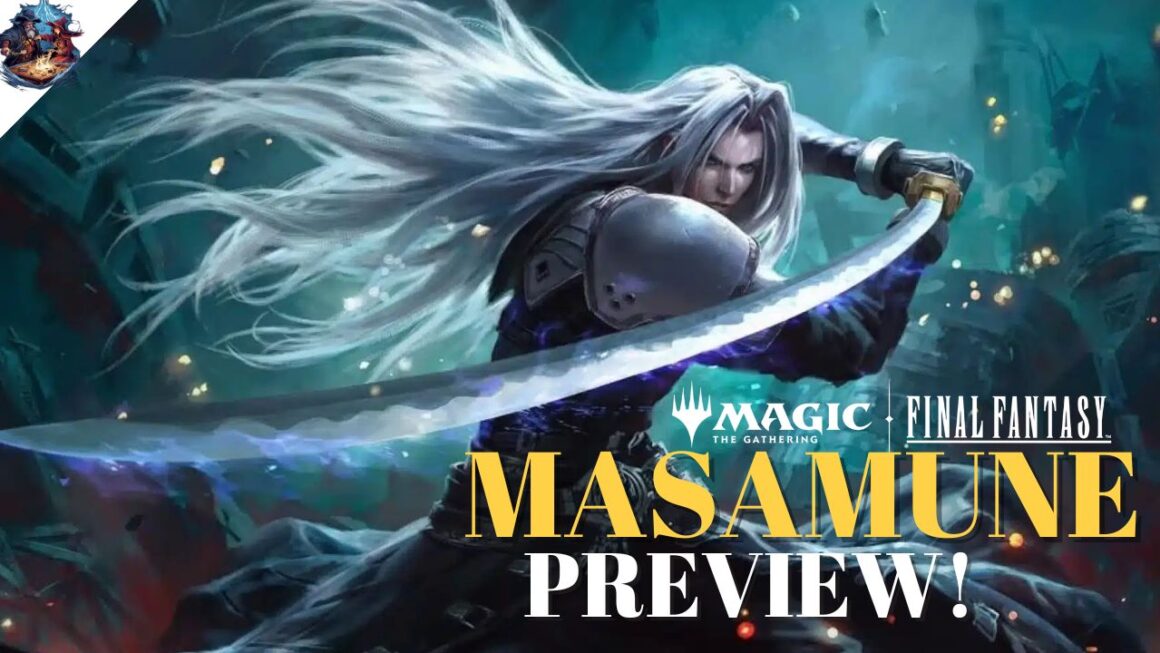Magic: the Gathering’s next new set – Duskmourn – is lurking behind the curtains, soon to be unleashed on September 27th. The horror-house themed expansion is filled with grisly art, and as usual you can expect a slew of new mechanics that will give your opponents’ the chills. These mechanics and other Duskmourn sneak previews were revealed in yesterday’s PAX West Panel. A ton was revealed in the hour-long segment, below you’ll see a quick recap on the spooky set’s new keyword mechanics and what to expect from them.
Rooms | Duskmourn New Mechanics
The biggest addition in our view is the new Enchantment card type – Room. It’s a new sub-type, just like Sagas and Classes – that will give you a permanent effect on the Battlefield. With a Room, you can cast either side with no restrictions.
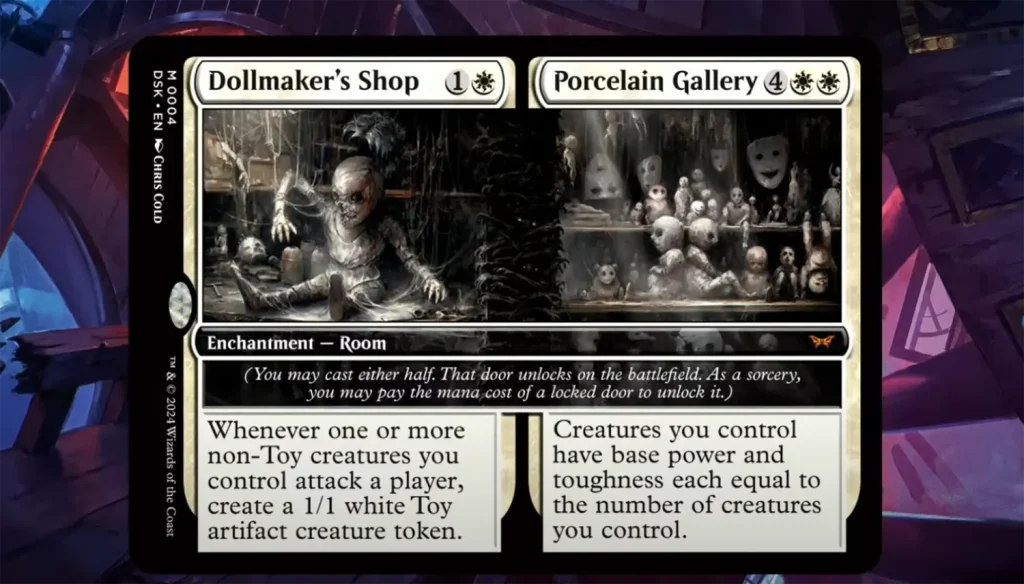
When you’re ready to ‘open the door’ to the other Room’s effect, just pay the extra cost. So it’s similar to Classes where you can cumulative effects according to how much Mana you’ve spent. However, Rooms gives you flexibility in choosing the initial effect that suits your current situation. Draw it in the late game and want to get the explosive effect? Go right ahead.
In that way, Rooms are similar to Adventure cards, which also allow you to cast either side. Adventures’ downside is that you have to cast the Instant/Sorcery portion of it first if you’re looking to maximize value and use both sides of the card. The one disadvantage of Rooms is that the other door can only be unlocked as a Sorcery, so no combat tricks or activating it on your opponent’s turn. With so much upside, Rooms could become an enduring card type, as much as how Adventures and Sagas have now become a common sight in new sets.
Eerie | Duskmourn New Mechanics
Like Dr Jekyll and Mr Hyde, Eerie is the creepy partner of the Room mechanic. It triggers when you “fully unlock a room,” or when an Enchantment enters under your control. It further strengths the Enchantment focus of Duskmourn while having some synergy with the new Room mechanic. Based on what we’ve seen with the Dollmaker’s Shop example above, fully unlocking a room is not going to be easy.
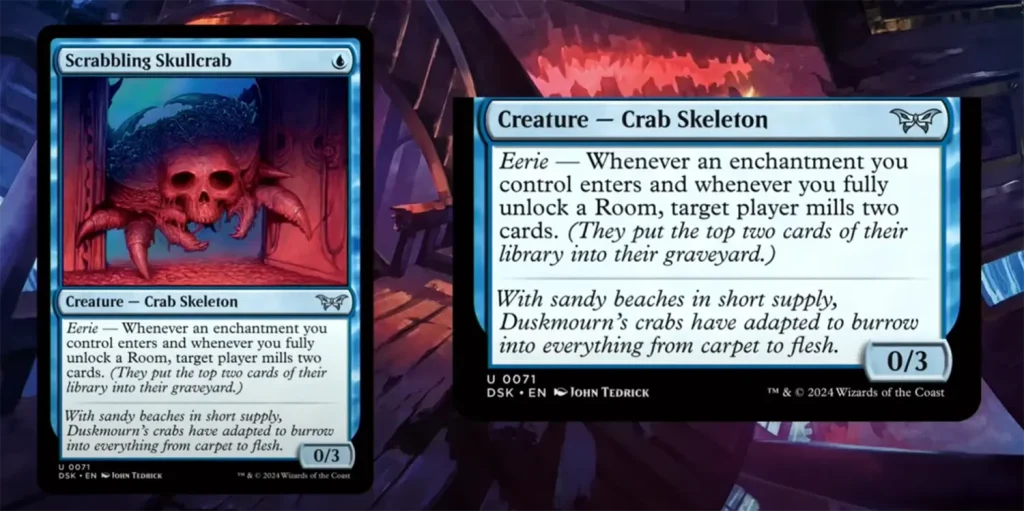
It does put Eerie in a rather tight spot, since fully unlocking a room is going to take time and mana. What you can do it is get your Eerie cards out early and work towards casting Enchantments. Rooms are Enchantments themselves, so unlocking the first door will trigger Scrabbling Skullcrab‘s Eerie ability. Once you have the mana to unlock Porcelain Gallery, Eerie will trigger yet another time. It thus makes sense to pair lots of Eerie and Room cards together, especially in prerelease when decks are built solely from Duskmourn cards.
Impending | Duskmourn New Mechanics
Impending is a new mechanic that signifies an inevitable doom, as anything you cast with Impending will enter with a certain number of time counters. This is usually offset by a reduction in the mana cost. Each turn, you remove one counter. When all are gone, the Enchantment is now permanently a Creature, able to attack and block.
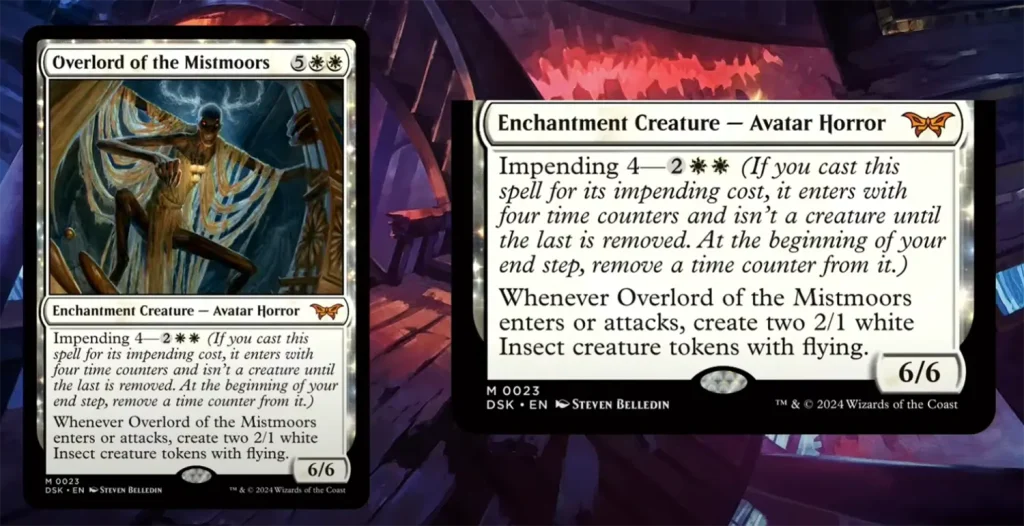
Impending is a close cousin of the long-time mechanics Suspend. Suspend also relies on the removal of Time counters before an effect takes place. With Impending, you’re actually getting an upgrade over Suspend because Overlord of the Mistmoors (above) will still trigger enter effects even though it has Time counters. For 4 mana, you do get two 2/1 flying tokens as you wait 4 more turns for Impending to resolve. With Suspend, you often don’t benefit until all counters are removed.
Suspend isn’t the most powerful of keywords out there, simply because you are putting up a notice to alert players of what’s coming. Impending hopes to add a bit more usability by creating immediate effects in the hope of encouraging more play.
Manifest Dread | Duskmourn New Mechanics
Manifest Dread is another twist to a long-serving mechanic. Whenever a player Manifests Dread, he or she looks at the top 2 cards of their deck, chooses one and puts it face-down on the Battlefield as a 2/2 creature. If the front face is indeed a creature, the face-down card can be turned face-up for its original mana cost.

The old Manifest mechanic often only takes the top card of your Library, and the chances of that being a creature was lower. With Manifest Dread, you have double the odds of pulling a creature card face-down (and later turning it face-up if you want). It’s a good idea, and in a 60-card format and a creature-focused deck, there’s a high chance you’ll pick out a creature from the top 2 cards. Things may not be that simple in the 100-card Commander format, where a deck only has 20-30 creatures.
In a nutshell, Manifest Dread will work wonders when you deploy it in decks that deploy high-cost creatures. The new Duskmourn card Hauntwoods Shrieker can even turn a creature face-up for just 2 mana. Imagine turning a Ghalta and Mavren face up just in time for an attack – it will be unstoppable. On the receiving end of Manifest Dread, you often have to be contented with a vanilla 2/2 creature, since the card is often not creature, or the creature itself is not worth paying its cost to turn it face-up.
End Step
Four new keyword mechanics in a set is rather standard fare in today’s releases, even though Impending and Manifest Dread are more like tweaks and power creep for older Magic mechanics. Rooms appear particularly useful, and we predict it’ll see popular adoption in the months to come. Likewise, Eerie holds promise because there is a sizeable number of Enchantment-focused decks in the Commander format, and there might even be one or two highly-rated generals in the main set that work off both Eerie and Rooms. On thing’s for sure, Duskmourn is going to keep us up all night just pondering the possibilities.

